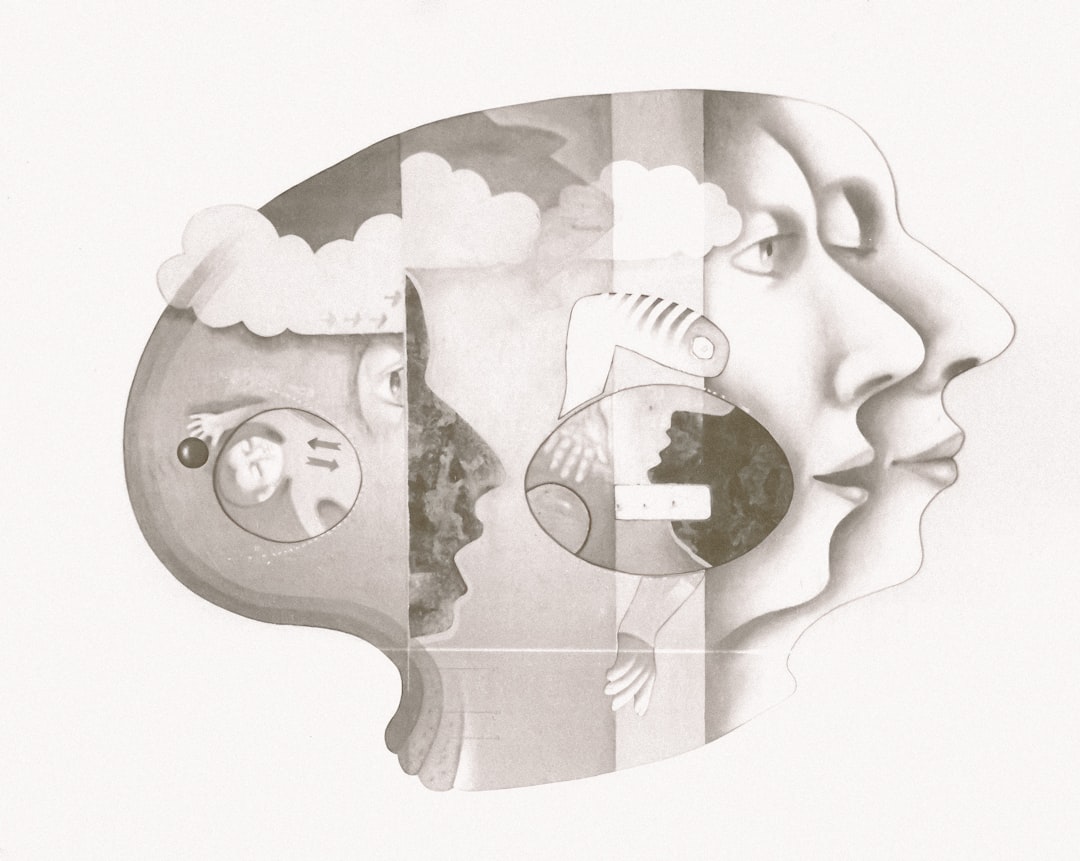Mental disorders encompass a wide range of psychological conditions that affect an individual’s thinking, feeling, behavior, and overall functioning. These disorders can manifest in various ways, from mild anxiety to severe psychosis, and they can significantly impact a person’s quality of life. The World Health Organization (WHO) estimates that one in four people will experience a mental health issue at some point in their lives, highlighting the prevalence and importance of understanding these conditions.
Mental disorders are not merely a result of personal weakness or character flaws; they are complex conditions influenced by a combination of genetic, biological, environmental, and psychological factors. The classification of mental disorders is typically guided by diagnostic manuals such as the Diagnostic and Statistical Manual of Mental Disorders (DSM-5) and the International Classification of Diseases (ICD-10). These manuals provide criteria for diagnosing various mental health conditions, facilitating communication among healthcare professionals and ensuring that individuals receive appropriate treatment.
Understanding the different categories of mental disorders is crucial for both mental health professionals and the general public, as it fosters awareness, reduces stigma, and encourages individuals to seek help when needed. Check out the latest health tips and information at Lifemedicallab.
Key Takeaways
- Mental disorders are conditions that affect a person’s thinking, feeling, behavior, or mood, and can impact their ability to function in daily life.
- Anxiety disorders are characterized by excessive worry, fear, or anxiety, and can include panic disorder, phobias, and generalized anxiety disorder.
- Mood disorders, such as depression and bipolar disorder, involve disturbances in a person’s mood, leading to feelings of sadness, hopelessness, or extreme highs and lows.
- Psychotic disorders, like schizophrenia, cause a person to lose touch with reality, experiencing hallucinations, delusions, and disorganized thinking.
- Eating disorders, including anorexia, bulimia, and binge-eating disorder, involve extreme emotions, attitudes, and behaviors surrounding weight and food.
Anxiety Disorders
Anxiety disorders represent one of the most common categories of mental health issues, characterized by excessive fear or worry that can interfere with daily activities. These disorders include generalized anxiety disorder (GAD), panic disorder, social anxiety disorder, and specific phobias. Individuals with GAD often experience persistent and excessive worry about various aspects of life, such as work, health, or social interactions, leading to physical symptoms like restlessness, fatigue, and difficulty concentrating.
The pervasive nature of this anxiety can make it challenging for individuals to engage in everyday tasks or maintain relationships. Panic disorder is marked by recurrent panic attacks—sudden episodes of intense fear that trigger severe physical reactions when there is no real danger. Symptoms may include heart palpitations, shortness of breath, dizziness, and feelings of impending doom.
These attacks can be so debilitating that individuals may begin to avoid situations where they fear an attack might occur, leading to agoraphobia in some cases. Social anxiety disorder, on the other hand, involves an intense fear of social situations where one may be judged or scrutinized by others. This fear can lead to avoidance behaviors that severely limit social interactions and opportunities for personal growth.
Mood Disorders

Mood disorders primarily involve disturbances in a person’s emotional state, significantly affecting their overall well-being. The most recognized mood disorders include major depressive disorder (MDD) and bipolar disorder. Major depressive disorder is characterized by persistent feelings of sadness, hopelessness, and a lack of interest or pleasure in activities once enjoyed.
Individuals with MDD may experience changes in appetite and sleep patterns, fatigue, difficulty concentrating, and even thoughts of self-harm or suicide. The impact of depression can be profound, affecting not only the individual but also their relationships and work life. Bipolar disorder is distinguished by alternating episodes of depression and mania or hypomania.
During manic episodes, individuals may exhibit elevated mood, increased energy levels, impulsivity, and a decreased need for sleep. These extreme mood swings can disrupt daily functioning and lead to risky behaviors. The unpredictability of these mood changes can create challenges in maintaining stable relationships and employment.
Understanding the nuances of mood disorders is essential for effective treatment, which may include psychotherapy, medication management, or lifestyle changes aimed at stabilizing mood fluctuations.
Psychotic Disorders
| Psychotic Disorders | Statistics |
|---|---|
| Prevalence | Approximately 3 in 100 people will experience a psychotic episode at some point in their lives |
| Gender Differences | Men are more likely to experience psychotic disorders than women |
| Age of Onset | Psychotic disorders often emerge in late adolescence or early adulthood |
| Treatment | Antipsychotic medications and psychotherapy are common treatments for psychotic disorders |
Psychotic disorders are severe mental health conditions characterized by a disconnection from reality. The most well-known psychotic disorder is schizophrenia, which affects how a person thinks, feels, and behaves. Individuals with schizophrenia may experience hallucinations—perceptions of things that are not present—such as hearing voices or seeing things that others do not see.
Delusions are another hallmark symptom; these are false beliefs that are firmly held despite evidence to the contrary. For instance, an individual might believe they are being persecuted or have extraordinary abilities. The onset of psychotic disorders typically occurs in late adolescence or early adulthood, although symptoms can emerge at any age.
The complexity of these disorders necessitates comprehensive treatment approaches that often include antipsychotic medications and psychosocial interventions. Early intervention is crucial in managing symptoms effectively and improving long-term outcomes for individuals with psychotic disorders. Support from family members and mental health professionals plays a vital role in helping individuals navigate the challenges associated with these conditions.
Eating Disorders
Eating disorders are serious mental health conditions that involve unhealthy eating behaviors and preoccupations with food, body weight, and shape.
The most common types include anorexia nervosa, bulimia nervosa, and binge-eating disorder.
Anorexia nervosa is characterized by an intense fear of gaining weight and a distorted body image that leads individuals to restrict their food intake severely.
This disorder can result in significant weight loss and malnutrition, posing serious health risks. Bulimia nervosa involves cycles of binge eating followed by compensatory behaviors such as vomiting or excessive exercise to prevent weight gain. Individuals with bulimia often struggle with feelings of shame and guilt regarding their eating habits.
Binge-eating disorder differs from bulimia in that it involves recurrent episodes of eating large quantities of food without subsequent purging behaviors. This disorder can lead to obesity and associated health complications. Treatment for eating disorders often requires a multidisciplinary approach that includes medical intervention, nutritional counseling, and psychotherapy to address underlying psychological issues.
Personality Disorders

Personality disorders are characterized by enduring patterns of behavior, cognition, and inner experience that deviate markedly from cultural expectations. These patterns are inflexible and pervasive across various contexts, leading to significant distress or impairment in functioning. The DSM-5 categorizes personality disorders into three clusters: Cluster A (odd or eccentric), Cluster B (dramatic or erratic), and Cluster C (anxious or fearful).
Examples include paranoid personality disorder from Cluster A, borderline personality disorder from Cluster B, and avoidant personality disorder from Cluster C. Individuals with borderline personality disorder often experience intense emotional instability, impulsive behaviors, and difficulties in interpersonal relationships.
They may have a distorted self-image and struggle with feelings of emptiness or abandonment.
Treatment for personality disorders can be particularly challenging due to the ingrained nature of these patterns; however, therapies such as dialectical behavior therapy (DBT) have shown promise in helping individuals develop healthier coping mechanisms and improve their relationships.
Obsessive-Compulsive and Related Disorders
Obsessive-compulsive disorder (OCD) is a mental health condition characterized by persistent obsessions—intrusive thoughts or images—and compulsions—repetitive behaviors or mental acts performed to alleviate the distress caused by obsessions. For example, an individual with OCD may have an obsession about contamination that leads them to wash their hands excessively or avoid touching certain surfaces altogether. This cycle can become debilitating as the compulsions take up significant time and interfere with daily life.
Related disorders include body dysmorphic disorder (BDD), hoarding disorder, and trichotillomania (hair-pulling disorder). BDD involves an obsessive focus on perceived flaws in physical appearance that are often unnoticeable to others. Hoarding disorder is characterized by the accumulation of possessions to the point where living spaces become cluttered and unusable.
Trichotillomania involves recurrent hair-pulling resulting in noticeable hair loss. Treatment for OCD and related disorders typically includes cognitive-behavioral therapy (CBT), particularly exposure and response prevention (ERP), as well as medication options such as selective serotonin reuptake inhibitors (SSRIs).
Trauma and Stressor-Related Disorders
Trauma and stressor-related disorders arise following exposure to a traumatic event or significant stressor. Post-traumatic stress disorder (PTSD) is one of the most recognized conditions within this category. Individuals with PTSD may experience flashbacks, nightmares, severe anxiety, and uncontrollable thoughts about the traumatic event long after it has occurred.
Symptoms can lead to avoidance behaviors where individuals steer clear of reminders of the trauma, further complicating their ability to function normally. Acute stress disorder shares similarities with PTSD but occurs within three days to one month following the trauma. Symptoms may include intrusive memories, dissociation, avoidance behaviors, and heightened arousal responses.
Treatment for trauma-related disorders often involves trauma-focused therapies such as eye movement desensitization and reprocessing (EMDR) or prolonged exposure therapy aimed at helping individuals process their experiences in a safe environment.
Substance-Related and Addictive Disorders
Substance-related and addictive disorders encompass a range of conditions related to the misuse of drugs or alcohol that lead to significant impairment or distress. These disorders include substance use disorders (SUDs), which are characterized by an inability to control substance use despite negative consequences. Individuals may develop tolerance—requiring more of the substance to achieve the same effect—and experience withdrawal symptoms when not using the substance.
Addiction can take many forms beyond traditional substances like alcohol or illicit drugs; behavioral addictions such as gambling addiction have gained recognition as well. The impact of substance-related disorders extends beyond the individual to families and communities due to associated health risks, legal issues, and economic burdens. Treatment approaches often involve a combination of detoxification programs, counseling services like cognitive-behavioral therapy (CBT), support groups such as Alcoholics Anonymous (AA), and medication-assisted treatment for certain substances.
Neurodevelopmental Disorders
Neurodevelopmental disorders are a group of conditions that typically manifest during early development and affect various areas such as cognition, communication, social skills, and behavior. Autism spectrum disorder (ASD) is one of the most well-known neurodevelopmental disorders characterized by challenges in social interaction and communication along with restricted interests or repetitive behaviors. The spectrum nature of ASD means that symptoms can vary widely among individuals; some may require significant support while others may function independently.
Attention-deficit/hyperactivity disorder (ADHD) is another prevalent neurodevelopmental disorder marked by persistent patterns of inattention and/or hyperactivity-impulsivity that interfere with functioning or development. Children with ADHD may struggle with organization, following instructions, or maintaining focus on tasks. Early diagnosis and intervention are crucial for improving outcomes for children with neurodevelopmental disorders; interventions may include behavioral therapies, educational support services, and medication management when appropriate.
Neurocognitive Disorders
Neurocognitive disorders primarily involve cognitive decline from a previous level of performance in one or more cognitive domains such as memory, attention, language, or executive function. The most common neurocognitive disorder is Alzheimer’s disease—a progressive condition characterized by memory loss, confusion about time or place, difficulty completing familiar tasks, and changes in mood or behavior. Alzheimer’s disease results from complex brain changes over time that ultimately lead to cell death.
Other neurocognitive disorders include vascular dementia—often resulting from strokes—and frontotemporal dementia—characterized by changes in personality and behavior due to degeneration in specific brain regions. Diagnosis typically involves comprehensive assessments including medical history evaluations, cognitive testing, brain imaging studies like MRI or CT scans, and laboratory tests to rule out other causes of cognitive decline. While there is currently no cure for many neurocognitive disorders, treatments focusing on symptom management can help improve quality of life for affected individuals and their families.
Understanding mental disorders requires a multifaceted approach that considers biological underpinnings alongside psychological factors while also recognizing the social context in which these conditions occur. Each category presents unique challenges but also opportunities for intervention through evidence-based practices aimed at improving outcomes for those affected.
If you or a loved one is struggling with a mental disorder, it is important to seek support and resources to help manage the condition. One helpful article to check out is 10 Ways to Support a Partner Who’s Depressed, which offers practical tips for helping a loved one navigate through depression. Additionally, exploring resources like Pine Rest Christian Mental Health Services can provide valuable support and guidance for individuals dealing with various mental health challenges. Remember, you are not alone in this journey, and there are resources available to help you find relief and support.
FAQs
What is a mental disorder?
A mental disorder, also known as a mental illness, is a condition that affects a person’s thinking, feeling, behavior, or mood. These disorders can vary in severity and can interfere with a person’s ability to function in daily life.
What are some common types of mental disorders?
Some common types of mental disorders include anxiety disorders, mood disorders (such as depression and bipolar disorder), schizophrenia, eating disorders, and personality disorders. There are many other specific mental disorders as well.
How are mental disorders diagnosed?
Mental disorders are typically diagnosed by mental health professionals, such as psychiatrists or psychologists, through a combination of interviews, assessments, and observation of symptoms. The Diagnostic and Statistical Manual of Mental Disorders (DSM-5) is often used as a guide for diagnosing mental disorders.
What are the causes of mental disorders?
Mental disorders can have a variety of causes, including genetic, biological, environmental, and psychological factors. Trauma, stress, and substance abuse can also contribute to the development of mental disorders.
What are the treatment options for mental disorders?
Treatment for mental disorders can include therapy, medication, and lifestyle changes. Some people may benefit from a combination of these approaches. It’s important for individuals with mental disorders to seek help from qualified mental health professionals.
Can mental disorders be prevented?
While it may not be possible to prevent all mental disorders, there are steps that individuals can take to promote good mental health, such as maintaining a healthy lifestyle, seeking support when needed, and managing stress effectively. Early intervention and treatment can also help prevent the worsening of symptoms.

